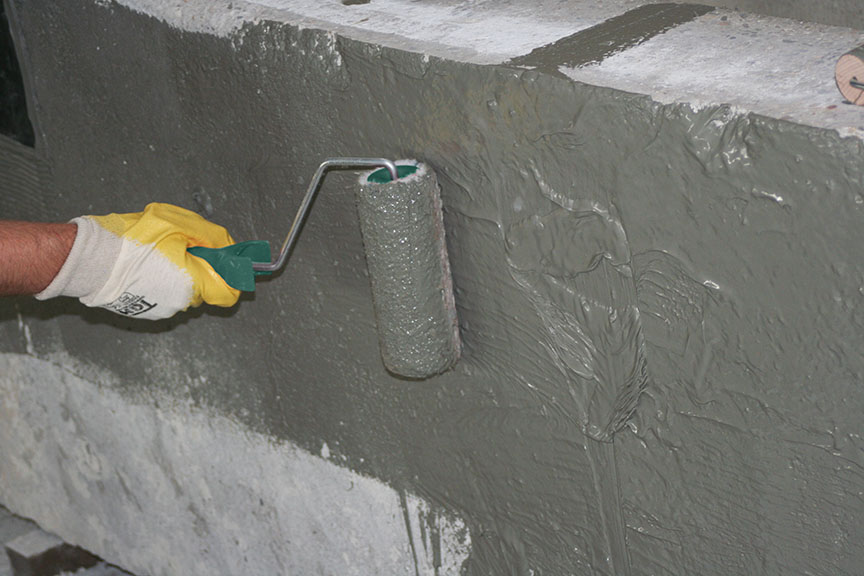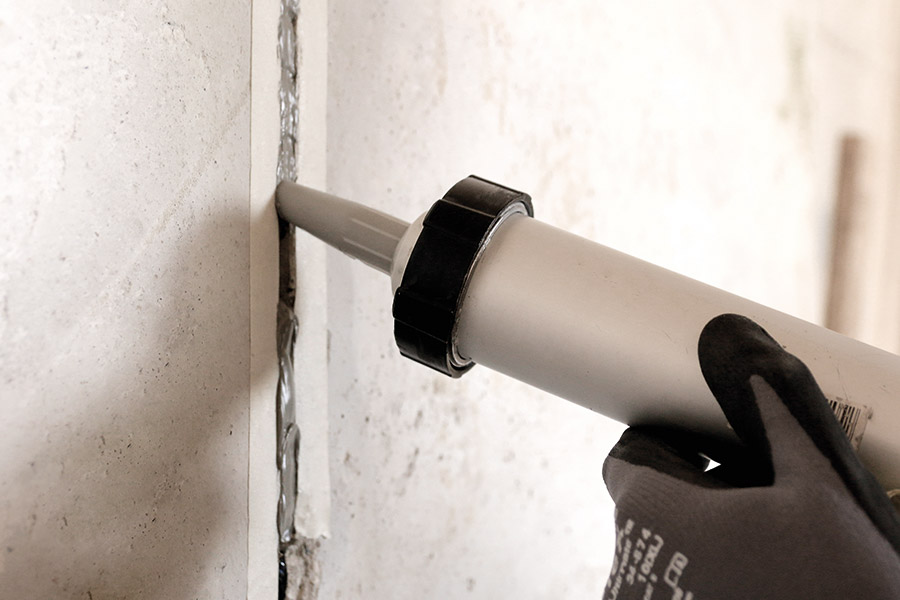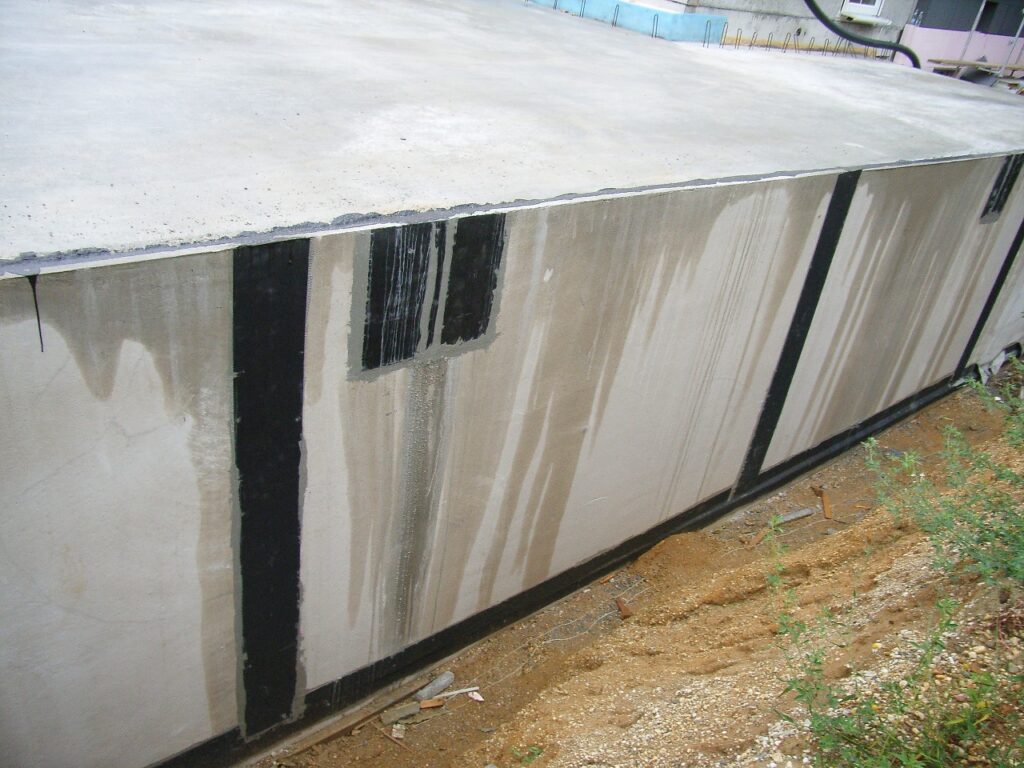Flawless balcony sealing with high quality materials
Effective sealing can keep out moisture and drafts. Sealing building components without gaps is particularly important in the area of the outer facade, since defects here impair both thermal insulation and moisture protection. New technologies enable effective solutions even in problematic areas, such as balconies. Especially in the context of a facade modernization on the house, it is often necessary to renovate the existing balconies and seal them afterwards.
BT sealing products are excellent for this purpose:
- To seal small and large balcony surfaces (balcony walls and floors) impermeable to water,
- to close joints and cracks subsequently and permanently and
- Combining the sealing of joints and surfaces in a few simple steps
Thus, the balcony sealing from the inside and outside, absolutely safe and quick to implement.

BT solutions for your balcony sealing
LiquidElast® – your professional for sealing balcony walls (type S+V) and balcony floors (type S,V + P)
Balcony sealing is the quick and inexpensive solution against moisture. LiquidElast® from B.T. innovation is a universally applicable, pressurized waterproof system that reliably seals building materials. By simple application, LiquidElast® (type S+V) hardens after surface application to form a soft elastic rubber-like membrane that effectively protects the substrate from penetrating moisture. However, joints can also be grouted with it. Curing takes place within 24 hours at a constant room temperature of 23°C and a humidity of approx. 50%. No post-processing needs to be done afterwards. LiquidElast® (type P) reaches final strength after approx. 7 days.

LiquidElast® – Advantages
- Pressure waterproof up to 1,0 bar
- Wear resistant and resistant to many chemicals
- Applicable on damp substrates from 0°C
- Crack-bridging up to 5 mm
- Permanently elastic
Instructions - Processing as surface sealing
InnoElast® – Effective sealing and filling of joints
When building a balcony, connection and expansion joints occur between the materials. These can be effectively closed with InnoElast®. Thus, moisture can no longer get between the balcony and the wall of the house. Even when applied to windows and doors – the InnoElast® system is absolutely reliable and can be used by anyone. The sealant has an extremely high adhesion and can therefore be used on almost all substrates indoors and outdoors. Due to its special composition, InnoElast® is a low-shrinkage, permanently elastic and weather-resistant sealant.
Advantages of InnoElast® Type 1
- Solvent-free
- low-shrinkage
- Applicable on damp substrates from -3°C
- Weather and UV resistant
- Permanently elastic
- Up to 25% motion absorption
- Applicable without primer
Advantages of InnoElast® Type 2
- Solvent-free and low shrinkage
- Applicable on damp substrates from -3°C
- Weather and UV resistant, high resistance to chemicals
- Permanently elastic
- Up to 10% motion absorption
- Applicable without primer
- Pressure waterproof up to 0,48 bar

Application:
InnoElast® is applied to a clean substrate, which must be free of dust, grease and oil. InnoElast® is filled on this by means of a tubular bag gun and then cures effectively. Curing is 2-3 mm per 24 h, at a room temperature of 23°C and humidity of 50%. The skin formation time is 2-3 hours for InnoElast® Type 1 and 15 minutes for InnoElast® Type 2 under the same conditions.
Instructions - Processing as a joint sealant
ProElast® – The two-component solution for permanently sealing joints and butt joints
In the event of the appearance of mold and dampness on and around the balcony must act quickly. In the case of exposed masonry, subsequent exterior sealing of joints and butt joints can be carried out using the ProElast® system from B.T. innovation. Consisting of resistant EPDM film and the extremely adhesive InnoElast® surface adhesive, it provides a durable and extremely strong bond. The ProElast® system is characterized by unlimited waterproofing, high weather resistance and simple processing.
ProElast® System – Advantages
- Pressure waterproof up to 2 bar
- Application on damp, ice-free substrate from 3°C
- Weather and UV resistant
- With InnoElast® type 2 = high chemical resistance
- Applicable without primer

Application:
After applying InnoElast® adhesive to a clean substrate, it is spread by means of a notched trowel. The sealing film is then glued centrally over the joint so that no air bubbles remain. The edges are then sealed with InnoElast® Type 1 or Type 2. Short curing times enable fast further work. The skin formation time is 2-3 hours for InnoElast® Type 1 and 15 minutes for InnoElast® Type 2 at a room temperature of 23°C and a humidity of 50%. Within 24 hours, a layer thickness of 2 to 3 mm, at a room temperature of 23°C and humidity of 50%, cures effectively. In this way, you reliably seal construction joints, predetermined crack cross-sections and movement joints.
Instructions - Processing as surface sealing
The sealing of balconies is subject, among other things, to DIN Standard 18 195, Part 5 “Building seals – non-pressing water on ceiling surfaces and in wet rooms” and DIN Standard 18 195, Part 9 “Building seals – penetrations, transitions, terminations”. Furthermore, the flat roof guideline contains regulations for unused and used roofs and surfaces and is used as a set of rules for balcony sealing. The following planning principles are relevant for effective sealing in the area of balconies:
- Balconies as well as loggias or arcades belong to the moderately stressed building components according to DIN 18 195, Part 5. The type of sealing must be coordinated accordingly.
- For effective drainage of the balcony requires a slope in the structure.
- On the sealing layer, the water must be permanently drained, no hydrostatic pressure must build up.
- Particularly sensitive areas on the balcony, such as penetrations or even expansion joint structures, must be raised out of the drainage plane to exclude standing water.
- Depending on the floor covering, a slope is required for the wear layer. For tiles and slabs with a flat surface, a slope of 1 to 2 % is recommended according to the ZDB bulletin.
- Particular attention must be paid to sealing the flanges of the drains.
Whether new construction or renovation, in order to successfully seal a balcony, certain areas must be treated with special care. At the edge connections, the sealing on the balcony must be routed behind the water-bearing level, that is, for example, behind the facade structure and window, roller shutter or door sill profiles. Problems arise here, for example, due to the construction sequence; the interface of the trades in this area must be planned with particular care. Depending on the situation on site, the sealing must be carried out at a height of between 5 and 15 cm above the top edge of the floor covering. InnoElast® joint sealants and the ProElast® system from B.T. innovation are used in this area.
For moderately stressed surfaces, there are various standardized sealings according to DIN 18 195-5, such as bitumen or polymer bitumen membranes, cold self-adhesive bitumen sealing membranes, plastic sealing membranes made of PIB, ECB, EVA, or PVC-P. Elastomers, asphalt mastics in two layers, a bitumen thick coating or coatings such as B.T. innovation’s FlächenElaste can also be considered as materials for sealing the balcony slab.
The Elast waterproofing systems from B.T. Innovation are DIN-compliant, can be used for almost all substrates and even in unfavorable weather conditions: Waterproofing tapes, joint sealants and surface coating systems are available. The sealants are suitable not only for sealing balconies, but also for highly stressed surfaces such as terraces. The high-quality products are used in new construction with cast-in-place concrete, for precast reinforced concrete elements and also for balcony renovation in old buildings.
Especially for balcony renovation, composite waterproofing is suitable in addition to the classic standardized types of waterproofing. Ceramic tiles or slabs are placed directly on the sealing, something the FlächenElast®. With it, skillful builders can seal a balcony itself. The exact instructions are described in the leaflet Composite sealing, published by the Trade Association of the German Tile Trade in the Central Association of the German Building Trade (ZDB).